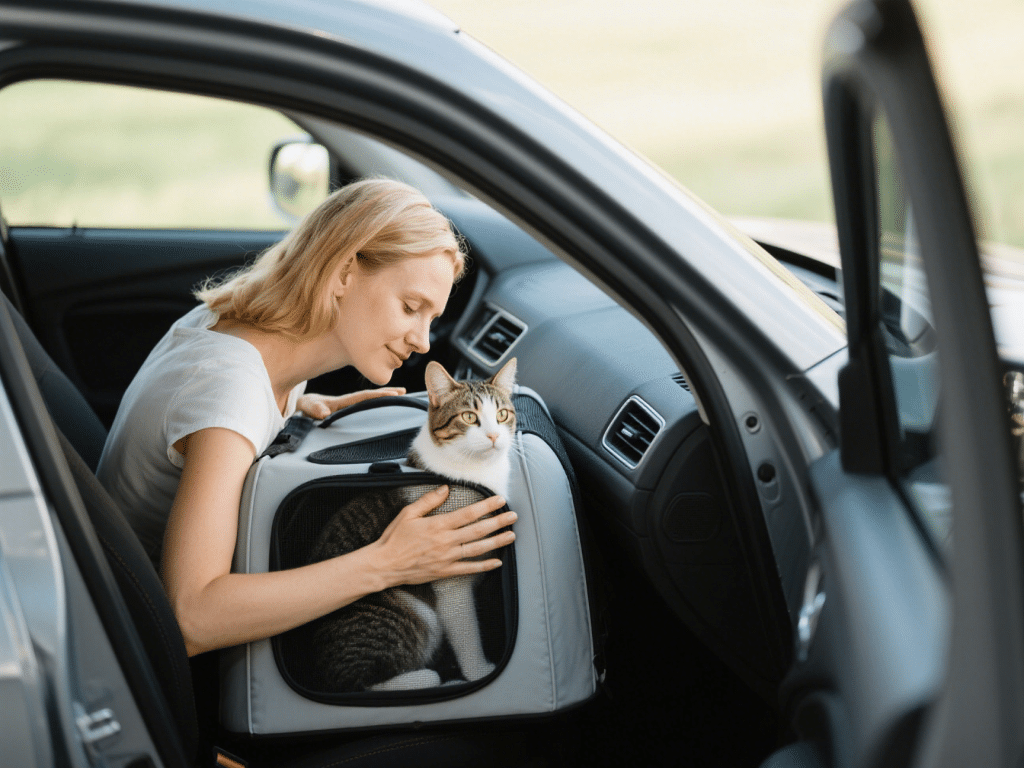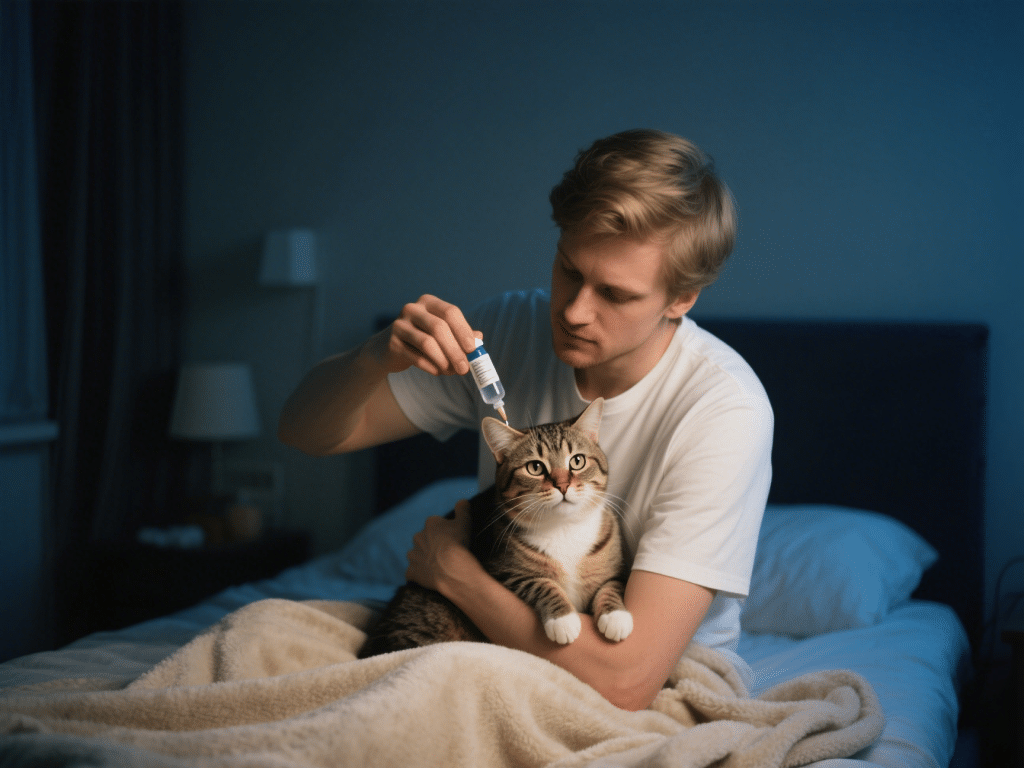Introduction
Car travel can be stressful for cats, who often associate carriers and vehicles with discomfort. With proper preparation—choosing the right carrier, acclimating your cat, and understanding feline behaviors—you can make car trips calmer and safer for your cat.
1. Selecting and Preparing the Carrier
Choose the Right Size and Style: The carrier should allow your cat to stand, turn, and lie down comfortably. Hard-sided carriers offer protection from sudden stops, while soft-sided carriers can be cozier if they are sturdy and leak-proof.
Acclimation and Positive Reinforcement: Start weeks before the trip—leave the carrier out in a familiar room with soft bedding and toys. Reward your cat with treats and praise when it approaches or enters voluntarily. Gradually close the door for short periods to build confidence.
Familiar Scents and Comfort Items: Line the carrier with a blanket or towel that smells like home. Place a favorite toy or a worn T-shirt with your scent to provide reassurance.
2. Pre-Trip Health and Safety Checks
Veterinary Evaluation: Schedule a check-up at least two weeks before travel. Ensure vaccinations are up-to-date, and discuss any motion sickness or anxiety. Vets may recommend cat-specific anti-anxiety aids such as gabapentin, Sileo gel (for situational anxiety), or feline pheromone collars.
Microchipping and ID Tags: Confirm microchip details are current. Attach a collar with an ID tag listing your cellphone number and destination address.
3. Car Environment Setup
Securing the Carrier: Place the carrier on the back seat, secured with a seatbelt to prevent sliding or tipping during sudden stops. Never allow a loose carrier—an unsecured carrier becomes a projectile in a crash.
Climate Control: Maintain a consistent temperature (around 68–72°F). Avoid blasting air vents directly onto the carrier. In warm weather, use sunshades on windows and keep windows slightly cracked for airflow if safe.
Minimize Noise and Motion: Play gentle classical music or white noise at low volume. Avoid loud radio stations. Smooth, gradual driving reduces motion cues that upset cats.
4. Traveling and Breaks
Short Test Drives: Take several short trips (5–10 minutes) to help your cat get used to motion. Reward calm behavior with treats after returning home.
Full-Day Car Comfort Supplies: Pack ample water in a spill-proof bowl, wet food in sealable containers, litter box (foldable or disposable), and a small litter scoop. Carry enough litter to replace soiled portions.
Scheduled Stops and Breaks: For trips over 4 hours, plan stops every 2–3 hours. Keep the carrier inside the car during breaks; never let your cat roam in an unfamiliar environment. Offer water and a small amount of food during longer stops. Use a long-handled litter tray at breaks to allow elimination without exiting the vehicle.
5. Managing Anxiety During the Trip
Natural Calming Aids: Use feline pheromone sprays (e.g., Feliway) 15 minutes before placing your cat in the carrier. Apply calming herbal collars (e.g., with valerian root) and consider L-theanine-based supplements.
Avoid Human Food Temptations: Do not feed unfamiliar foods or human snacks that may cause digestive upset. Gradually introduce travel-safe treats like freeze-dried tuna for positive reinforcement.
Reassurance Without Overstimulation: Speak softly to your cat through the carrier’s wire door if it is visible. Avoid frequent handling; too much stimulation can exacerbate stress.
6. Nighttime and Multi-Day Travel
Overnight Arrangements: Book pet-friendly hotels in advance. Verify room floors are carpeted or tile to prevent accidental escape. Request a quiet room away from stairwells and elevators.
Maintaining Routine: Keep feeding times consistent. Bring familiar bedding and toys to help your cat adjust quickly to new surroundings.
Caravan Travel Tips for RVs: If traveling in an RV, secure a designated cat-only area with windows screened but closed. Affix scratch-resistant window perches for lounging.
7. Unloading and Post-Trip Care
Allow Adjustment Time: Upon arrival, place the carrier in a quiet, enclosed space (bathroom or spare room) to help your cat acclimate for 24–48 hours. Provide familiar litter, bedding, food, and water.
Gradual Exploration: Let your cat explore new areas under supervision. Keep doors and windows closed to prevent escape.
Observe for Signs of Stress: Monitor for excessive hiding, lack of appetite, or vocalization. Offer extra affection and maintain routine playtime to help reduce anxiety.
Conclusion
Traveling by car with a cat need not be a distressing ordeal. Early acclimation, proper carrier selection, environment control, and scheduled breaks are keys to a calm journey. By understanding feline behavior and using gentle calming strategies, you create a safer, more enjoyable travel experience for both you and your cat.










Comments on "How to Travel by Car with a Cat Without the Stress" :